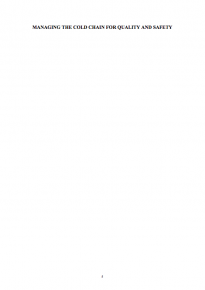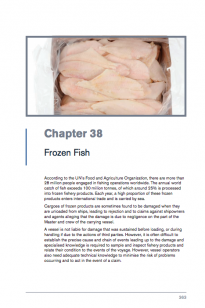Freezing
Freezing preserves the storage life of foods by making them more inert and slowing down the detrimental reactions that promote food spoilage and limit quality shelf life. Freezing is one of the most important processing and preservation methods for fish. The main freezing methods used are blast freezing, plate freezing, immersion or spray freezing.
Advantages of freezing include:
- flesh is changed very little and there is minimal loss of quality
- fish can be stored for many months - for times when catches are scarce
- large quantities of fish can be stored (assuming the cold storage capacity is available)
- good quality fish can be transported under refrigerated conditions over long distances (e.g. export to areas where fresh fish are unavailable; fish caught in remote waters can be consumed at home)
Disadvantages of freezing include:
- quality changes can occur if fish is not stored properly
- can be expensive due to the power or fuel needed to operate the freezer
- customers often have less regard for frozen fish
- until it has thawed, it may be difficult to identify whether the fish has been abused
Various factors can lead to food loss and waste (FLW):
- Processing of poor quality raw material
- Slow freezing process
- Wrong storage temperature
- Temperature fluctuations
- Unfrozen water
- Freezing damage
- Vapor migration
- Exposure of frozen product to air
Key Publications
Freezing and refrigerated storage in fisheries This FAO publication provides an introduction to the operations and equipment used in fish freezing and cold storage on shore and sea, and gives information on applying low temperatures to reduce deterioration of quality. | |
Managing The Cold Chain For Quality And Safety This manual summarizes the key recommendations for processing, handling, distribution and storage of chilled and frozen foods. | |
Guide for vessel operators to assist minimize the risk of problems associated with the transport of frozen fish products. |
More Resources
More Resources
27 February 2024
31 October 2023
05 September 2023














